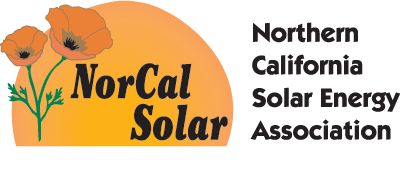Quick Links
Upcoming Event
No Event
Our Sponsors
Our Tweets
Amazon Smile
Newswire
Not So Strange Bedfellows?
Pete Shoemaker, NorCal Solar Board of Directors
Share this post:
Comments on "Not So Strange Bedfellows?"
There are no comments on this post.
Tags:WARNING: I am about to use a slightly risqué joke to illustrate a point. The chicken and the egg are sitting up in bed together. The chicken is smoking a cigarette and has a satisfied look on its face. The egg is very grumpy and turns to the chicken and says: “Well, I guess we answered THAT question!”
The solar revolution has necessitated rather intimate relationships between solar vendors/customers and their local utilities, particularly in the realms of net metering. As the story above illustrates (my favorite joke, by the way), these relationships can easily be seen as constant struggles where only one party can come out on top, so to speak, and this is certainly not ideal for the long-term, sustainable growth that the solar industry wants. So a key question becomes, can utilities and the solar industry co-exist in a truly win-win scenario?
The common perception of the solar-utility relationship follows this logic: utilities make money by selling power, solar customers get their power free from the sun, therefore solar is a threat to the utilities’ economic survival. Extreme versions of this logic see utilities as dinosaurs which, in the manner of large, wounded beasts, will become more and more dangerous as they approach their inevitable extinction. “Jurassic Power”—coming soon to a theater near you.
The reality, as always, is quite different. Only a tiny fraction of PV systems are off-grid, so the vast majority depend on a high-functioning electric grid to operate. The grid is a massive, complicated infrastructure and needs large and financially healthy companies to maintain and upgrade it properly. For the solar industry to see utilities as the evil empire and look forward to their demise is a classic case of cutting off your nose to spite your face. Such a scenario would be a disaster for all.
But there is no doubt that solar is a game-changer, and that it affects utilities’ revenue streams. How can we structure the game so that everyone can survive and thrive, as my health care provider might say, and is there anything to guide us? Fortunately, there is such a precedent. Thirty-five years ago the California Public Utilities Commission (CPUC) foresaw a similar “threat” to the utilities they regulated in the form of energy efficiency and conservation measures the Commission wanted to implement. They responded by changing the financial structure of the utilities (“decoupling”) so that they did not make more money by selling more power, and thus were able to become willing partners in reducing usage and increasing efficiency.
The success of energy efficiency in California is well-known and has served as a model for the nation. It can certainly be argued that decoupling was also a significant factor, along with many others, in California leading the nation in the adoption of solar, as the utilities there were less likely to perceive it as a threat. Of course there have and been and will continue to be major disagreements and battles over key issues, and there is no doubt that utilities will need to change faster than they ever have before and that these changes will be challenging. But the results so far in the rapid growth and deployment of solar are encouraging, and that’s the point.
To answer the question above, it is certainly possible for utilities and the solar industry to coexist in a mutually-supportive fashion. The first step is for all parties to realize that this is both desirable and necessary, as I believe it to be. Only then can we figure out how to do it.
I can envision an updated story of morning-after harmony with a happy chicken AND a happy egg, of course without the cigarette. No joke.





